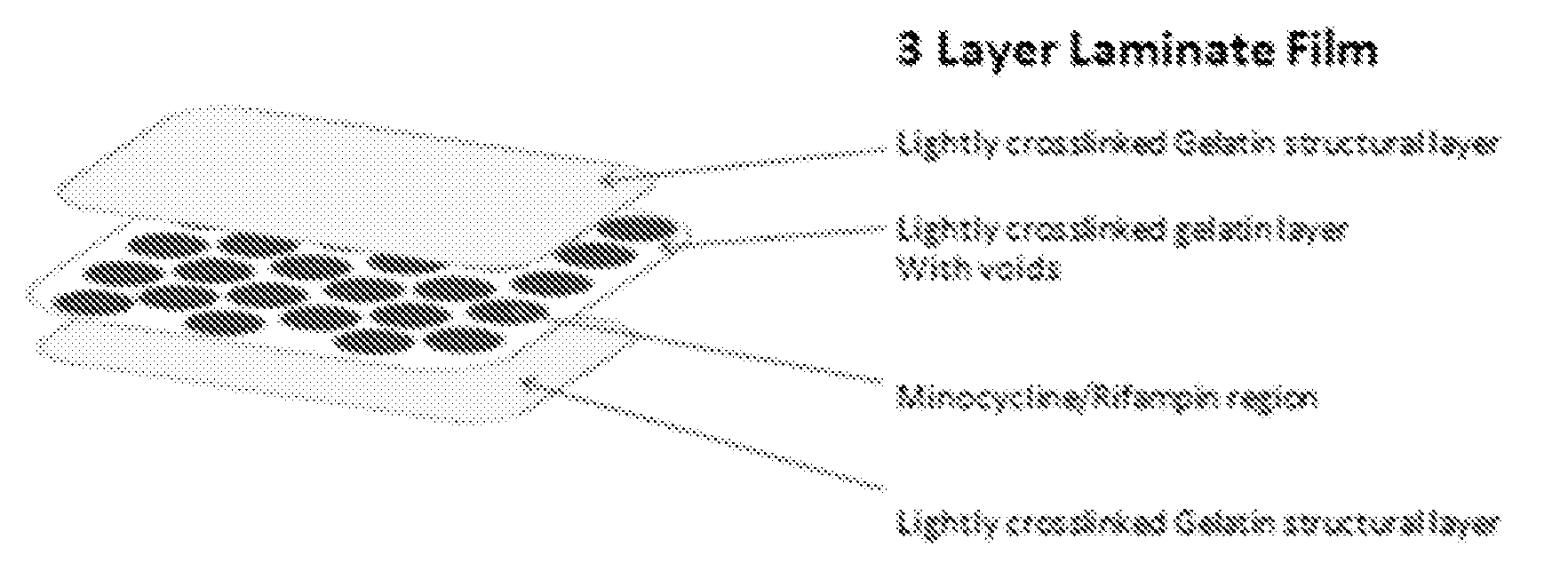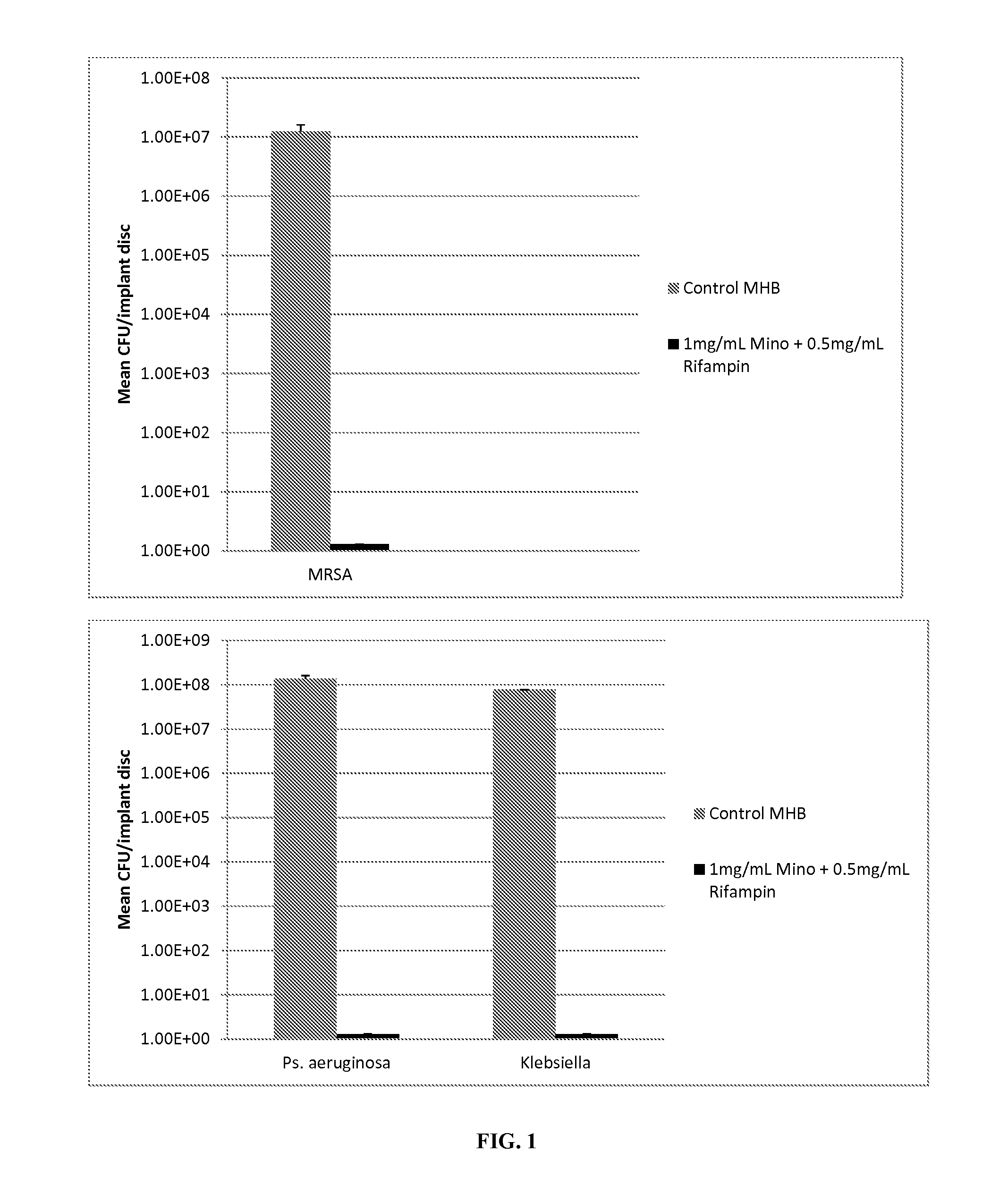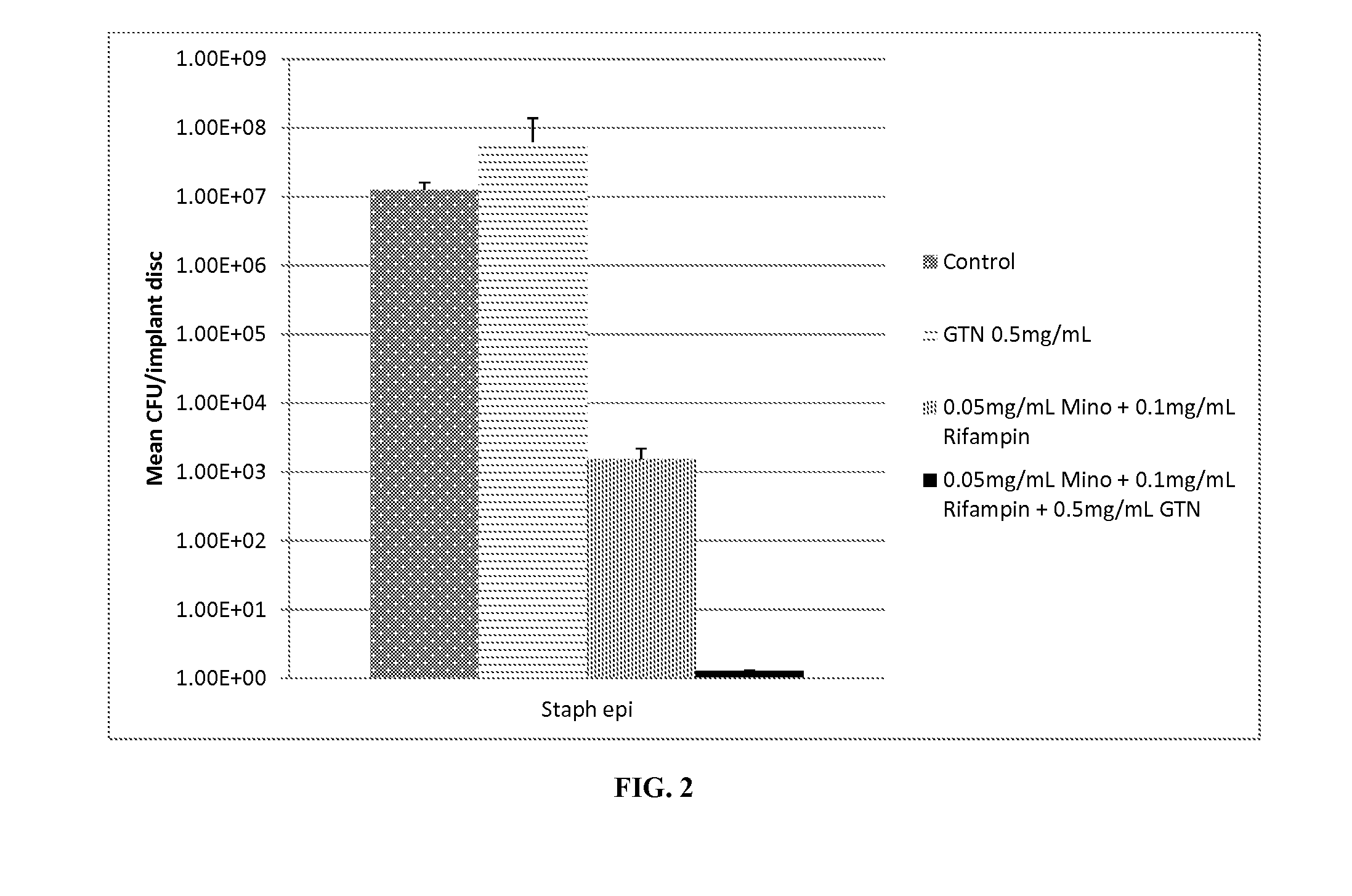Antimicrobial wraps for medical implants
a technology for medical implants and antimicrobial agents, applied in the field of medicine, can solve the problems of prolonged need for infection protection, increased valuable or time, and shortened service life, and achieve the effects of reducing or substantially preventing infection, reducing the amount of antimicrobial agents, and thorough delivery of antimicrobial agents
- Summary
- Abstract
- Description
- Claims
- Application Information
AI Technical Summary
Benefits of technology
Problems solved by technology
Method used
Image
Examples
example 1
Fabrication of Highly Plasticized-Gelatin Films
[0067]Molten gelatin was made by adding 16 g porcine gelatin to 40 ml water and dissolving at 80 C. 16 g glycerol was then stirred in to form a plasticized solution. This was poured into a large plate to form a thin layer of liquid at the bottom and allowed to cool. Upon cooling, the thin film solidified and was peeled off of the plate. It could be wrapped around a silicone breast implant to which it conformed and adhered. The film was placed in a 37 C incubator and checked periodically. It remained solid for approximately 10 minutes after which is became soft and melted to a viscous liquid indicating a working time of approximately 10 minutes to place the implant from the time it enters the body.
example 2
Adhesive Layer on Highly Plasticized Gelatin Film
[0068]A film was formed as in Example 1. A separate solution of 8 g gelatin in 4 ml water was heated to which was added 2 ml 50% gluconic acid. This was poured on top of the plasticized gelatin film. Upon cooling the top surface of the plasticized gelatin film was now sticky and very adhesive.
example 3
Production of Minocycline / Rifampin Disc
[0069]20 ml of plasticized gel was made as described in Example 1. To this was added 1.5 ml ethanol containing 20 mg Minocycline and 10 mg Rifampin. To form a coated test disc, molten plasticized-gel was pipetted into 24 well microtiter plates until the bottom of each well was covered (approximately 1-2 mm thick layer of liquid). A solid 2 mm thick, 6 mm diameter silicone disk (same material as breast implant shells are fabricated with) was placed on top and the plate cooled at room temperature for 2 minutes. The film+disk was briefly heated and another film layer (thickness of approximately 1-2 mm) was placed atop the disk. The gel was allowed to cool at room the ethanol to evaporate. Finally the film covered discs were removed from the mold and the layers were cut with a 7.5 mm diameter cork borer. This resulted in 7.5 mm test disc that was comprised of a 6 mm diameter silicon disc completely encased in antimicrobial gel wrap with 2 mm on eac...
PUM
| Property | Measurement | Unit |
|---|---|---|
| melting temperature | aaaaa | aaaaa |
| melting temperature | aaaaa | aaaaa |
| melting temperature | aaaaa | aaaaa |
Abstract
Description
Claims
Application Information
 Login to View More
Login to View More - R&D
- Intellectual Property
- Life Sciences
- Materials
- Tech Scout
- Unparalleled Data Quality
- Higher Quality Content
- 60% Fewer Hallucinations
Browse by: Latest US Patents, China's latest patents, Technical Efficacy Thesaurus, Application Domain, Technology Topic, Popular Technical Reports.
© 2025 PatSnap. All rights reserved.Legal|Privacy policy|Modern Slavery Act Transparency Statement|Sitemap|About US| Contact US: help@patsnap.com



